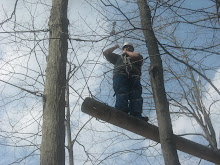``Those who can`t Teach`` vs. ``It takes a Village to Raise a Child``
As I prepare for a career in teaching, I am thinking about what my personal teaching philosophy should be and how I will put my teaching pedagogy into action. This year as a Beyond Borders student I was tasked to read a chapter from Paulo Friere`s Pedagogy of the Oppressed where he writes about the power balance within the classroom. Friere describes the relationship between the teacher and student as being unequal where the teacher holds the majority of the power over the student. In order for valuable consumption of education to take place, Friere believes that the student needs to be given an equal amount of power in the teaching dynamic. As I begin to think about what kind of teacher I want to be, I know I want to teach students but I want to learn from them as much as I teach them. This basic form of equality education has been unfortunately compromised in the classrooms I have taught in while in Kenya.
The teacher exclusively holds the power in the education model and the students are left in a vulnerable and sometimes volatile environment. In the education model that I have seen the teacher student dynamic is often better described as a servant relationship where the teacher is the pompous master and the student is used as a support system. For example, if the teacher needs anything the student must be responsible for knowing what the teacher requires. This relationship can be as simple as a student getting a piece of chalk or a textbook that a teacher left in the staffroom or a teacher that refuses to erase the chalkboards and has a student stand in front of the class to erase the chalkboard for the teacher. Students are also treated as servants when they are asked to get water or tea for their teachers or even run errands for their teachers like delivering forms to places as far as thirty minutes away. The education model in this form is oppressive. The model is firm in the sense that too many teachers are behaving in this manner and that it is considered acceptable behaviour and appropriate to the teacher student relationship.
The teacher holds even more power in more serious matters. Discipline is a subject that I`ve written before. I`ve seen discipline used far too many times which has made me loose favour with many teachers I`ve met along my journey. I will remind you that caning in Kenya is illegal and no teacher is allowed to lay a hand on a student. Still caning does happen and every classroom I`ve been in carries a cane. A vast majority of teachers responses indicate that as long as a child is not bruised and that no mark is left on the body then there is no proof. The surprising thing that I`ve encountered is that every time I have seen a student get more then ten lashes or cry from a beating a teacher has given, a parent has gone to the classroom the next day and filed a complaint. The complaint action seems like a step towards progress but unfortunately because there is literally no bruising or marks on the child, the teacher denies that a beating took place. Because the teacher is the one holding the power and the voice of the children remain unheard, the teacher always wins.
The school itself continues to yield power. A free government education forces students to pay uniform fees, desk rental fees, lunch fees, examination fees and I`m almost certain that I`ve seen teachers take a cut off the top of these fees. These are children that are raised in a slum; families live in poverty and must sacrifice for children to be educated and the quality of education isn`t even that high. Furthermore, even if you have the approximately $500 CAD per student to send your kids a low level private school, it is a huge chunk out of a family income of approximately $3500 CAD. In no circumstance is the family even given an opportunity to have an ounce of power in the education model but they are the ones paying into the system. The school forces students to clean the classroom, wash the cement and creates of subordinate culture on a daily basis.
I understand that a power relationship will exist in the classroom model. A teacher will always be seen as the leader in the classroom and has a job to educate the children but it is how a teacher yields their power that dictates what kind of environment is created. Teachers should be striving to reduce the innate belief that they are the professorial model and must be obeyed. Instead, teachers should try to create as much of an egalitarian relationship as possible where students feel their ideas are valued, listened too and taken into serious consideration. Parents must be given an opportunity to provide input and be educated on what the general teaching pedagogy of a districts classroom is like. Educational professionals who are not just looking at the bottom line must contribute and work to balance these important objectives. These steps will reduce the extreme power imbalance of the classroom.
Most of all, I believe that teachers must stop treating children as stupid and parents as useless. The saying, ``Ìt takes a village too raise a child`` should be applied and put into action where resources are invested into children instead of the child investing energy into the resources. The truth is that teachers care less about students because for the most part, Kenyan teachers themselves work in oppressive environments and have a low standard of living. The popular mythical statement, ``those that can`t, teach`` is a Kenyan reality and unless people start to adjust their perception on both of these statements, the education model will remain forever flawed.

No comments:
Post a Comment